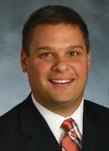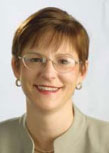Billing and charging for CSPs now encompasses a wide range of one-time services in addition to flat rate bundles. Traditional systems are no longer fit for purpose, but what is required for CSPs to continue to bill for their own services and charge for the services of others in a realtime, on-demand world, asks Jonny Evans?
Communications service providers’ (CSPs) billing processes are becoming increasingly complex as they work to support traditional services side by side with new and sometimes unpredictable OTT business models – and all in real-time.

Jennifer Kyriakakis, the co-founder and vice president of marketing at Matrixx Software, says: “Billing and charging in real-time for any service presents a range of complications for CSPs, from authorising the service, to delivering it, then tracking it and ensuring C that it is being billed for correctly.”
Authorisation isn’t simple
From over-the-top (OTT) service access privileges to current data and credit allowances, CSPs need to be able to accurately query multiple systems in real time and deliver services within agreed SLA parameters. Handling such queries against CSP, OTT and other systems demands lots of interoperability.

“Billing has always been complex. Add in these new services and it’s more important than ever that CSPs have a unified system in place to ensure not just the billing but rating, trading and routing are done correctly,” says Vic Bozzo, the senior vice president for worldwide sales and marketing at Telarix.
Parimal Mohile, the chief architect at Tech Mahindra, advocates the necessity for a real-time charging mechanism. “In terms of billing, CSPs will move to a real-time charging mechanism, irrespective of whether they bill the customer in real-time or not,” he says. “In the future the charge records will form the basis for supplying billing intelligence to consumer systems like bill formatting and printing, electronic bill presentment and payment (EBPP), self-care, enterprise resource planning and dunning. These charge records will be dumped in a big data lake for analytics, business intelligence and real-time action perspectives. This will also bring in, at the required low cost, extreme billing flexibility which will become the mainstay for all billing needs.”

Michelle Nowak, the vice president for product management of global BSS solutions at CSG International, all of this capability needs to be available regardless of the service or network type. “These capabilities need to be network, service and event agnostic to support a wider range of services that add perceived value to the CSPs overall communication services,” she says.
CSPs can try to meet the future by patching existing systems, but this may not be ideal in the long-term, adds Bozzo. “CSPs need to be in a position to not only deal with the issues they have now but also any new innovations the future may bring. In many cases patching existing systems doesn’t solve the problem but rather creates even more complexity.”
Mohile warns patching and extending existing systems may not be viable, or worthwhile. “CSPs need to atomise the capabilities provided by their current systems and aggregate these atomic functions through a common data model into a service layer,” he says. “Not all systems can provide such capabilities and these must be marked for sunset.”
So, extending existing systems may not always be the best way forward, but that’s not to say adjunct systems can’t do the job, at least at times. “It depends on if the systems they have are meeting their needs and how sophisticated they are,” says Bozzo.
The rapidly evolving market means CSPs need to remain flexible as they develop billing systems, observes Timo Ahomaki, the chief technology officer of Tecnotree. “There is currently no sensible status quo available to build rigid contractual structures or IT systems around,” he says.
Deploying support for third-party services is very new to some CSPs: “Some have simply not offered thirdparty charging as an option, but they may find themselves missing out on any potential OTT business in the future,” warns Tony Poulos, market strategist at WeDo Technologies. CSPs must ensure any adjunct systems they may deploy don’t cause other complications in their system.

Facing such a complex mix, some CSPs are choosing to roll out new solutions strategically, says Martin Morgan, the vice president of marketing at Openet. “Increasingly CSPs are going for an adjunct approach and putting a real-time charging system in place to cater for all data traffic for all customers,” he says. “Rated data records are then sent to the billing system for inclusion on the bill. This enables them to phase out legacy systems in line with the move all IP services and avoid the risks of high cost, lengthy billing transformation projects.”
Poulos adds: “CSPs that have not yet undergone some major transformation of their legacy back-office will have no choice but to work with adjunct systems – but in the long term, the exercise may not be costeffective.”
For Kyriakakis, virtual network operators have demonstrated that integration of new systems can be achieved rapidly and cost effectively. “The rapid rollout of MVNOs in recent years is proof that integrating new systems into a network can be done rapidly and cost effectively,” she says. “The benefits of being able to offer new services to customers and bill for them in real-time will, over time, offset the initial cost and time of overhauling a billing solution.”
Some CSPs have implemented separate platforms, such as for MVNE operations, others have taken the chance to create fresh brands to serve specific verticals. “Relatively few, on the other hand, have managed to successfully combine radically new business models with the mainstream business processes and IT systems,” says Ahomaki.
One BSS system to cater for all possible scenarios seems unachievable. Focusing on core business needs and remaining open to unforeseen opportunities while collaborating with extremely innovative partners may be the best way to square this rapidly evolving and complex CSP environment as business models, customer demand and foundational technologies continue to undergo extensive disruption and systemic change.






